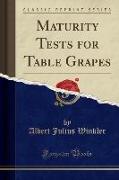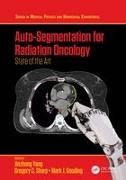Maturity Tests for Table Grapes (Classic Reprint)
BücherAngebote / Angebote:
Excerpt from Maturity Tests for Table GrapesCollection of Samples - During 1927 and 1928, while the methods of scoring and analysis were being tested, the collection of samples was confined to the table grape varieties in the University Farm vineyards at Davis. Each day during the harvesting season one lot of twelve samples was collected so as to represent a range of ripeness from well below what would be considered fair in eating quality to what would be considered good to excellent. Each lot was. Composed of a single variety. The individual samples. Of a lot represented approximately five pounds of grapes of as nearly the same degree of ripeness as it was possible: to obtain by tasting each cluster before it was removed from the vine. In the seasons of 1929, 1930, and 1931 samples of the leading table grape varieties in the ripening range, i.e. From poor to good in eating quality, were also collected from all of the principal districts of the state in which they are grown. In these collections usually-only one lot, and at mos-t two lots, of twelve samples of one variety were obtained from one grower. Six or more lots of each variety were obtained in each of the principal districts. By collecting only one lot of a. Variety {from a ranch and obtaining fruit from as many locations in a district as possible, fruit which was fairly re-presentative of the district was obtained.After collection, the samples were immediately shipped to 'davis by express and stored at 30° F until the day before they could be scored and analyzed. The fruit was always brought to room tempera ture for the scoring. In no' case was the storage period sufficiently long to result in'any appreciable changes in the quality of the fruit: The samples from the University Farm vineyards were score-d and analyzed on the day they were collected.Scoring the Samples. - The samples of one lot. Of fruit were placed at random on a table and numbered from one'to twelve. The indi vidual scorers then tasted a sufficient number of the berries from various parts of the clusters of each sample to enable them to designate its eating quality as poor, fair, good, very good, or excellent. Of the total group of 43 individuals that cooperated in the scoring at least 6 and usually not more than 8 tasted each sample of a. Lot of fruit. Each of the individuals scored the samples of fruit independently This method of scoring along with the fact that only one lot of fruit was scored on one day which was not enough to deaden the power of discrimination of the tasters, resulted in a. Fairly accurate evaluation of the relative eating qualityiof the Samples. That this was true is. Indicated by the precision with which the poor samples are separated fro-m the good in the tables presented in connection with the discussion of-the Balling-acid ratio as a means of measuring palatability.About the PublisherForgotten Books publishes hundreds of thousands of rare and classic books. Find more at www.forgottenbooks.comThis book is a reproduction of an important historical work. Forgotten Books uses state-of-the-art technology to digitally reconstruct the work, preserving the original format whilst repairing imperfections present in the aged copy. In rare cases, an imperfection in the original, such as a blemish or missing page, may be replicated in our edition. We do, however, repair the vast majority of imperfections successfully, any imperfections that remain are intentionally left to preserve the state of such historical works.
Folgt in ca. 5 Arbeitstagen




